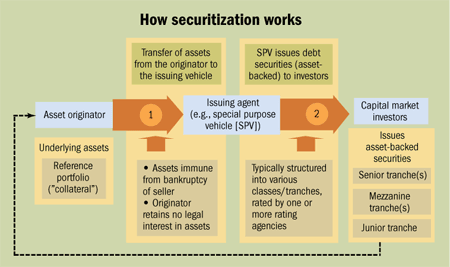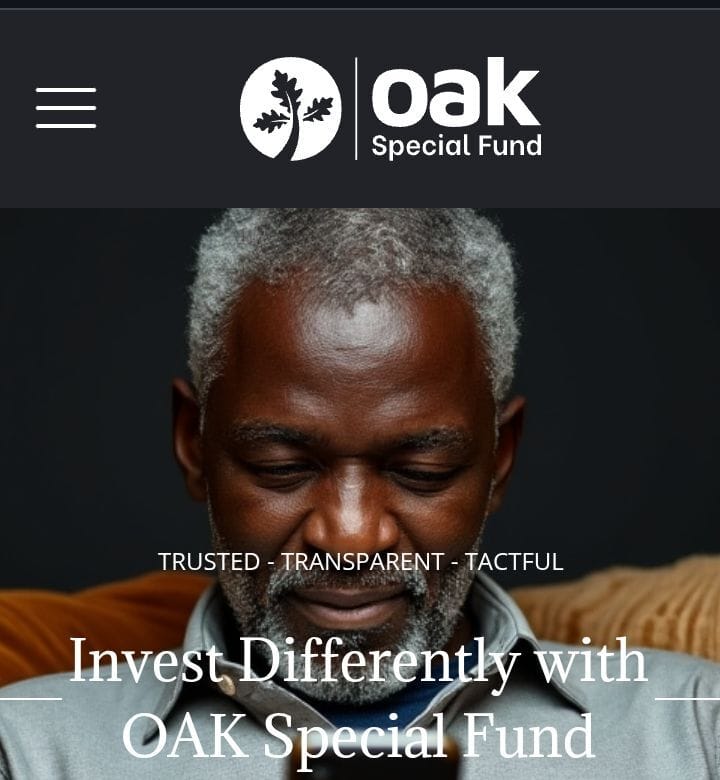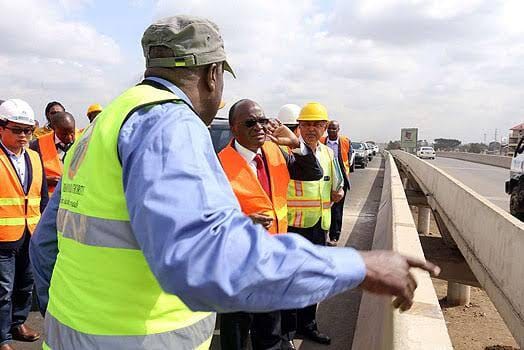- Unbuilding Africa
- Posts
- The Unusual Way Kenya Raised Ksh175 Billion to Pay Contractors
The Unusual Way Kenya Raised Ksh175 Billion to Pay Contractors
SUMMARY: For many years, Kenya’s road construction projects stalled due to delayed payments. Then recently, the government used an unusual tool called securitisation to unlock KSh175 billion, finally paying off contractors.

Roads and Transport Cabinet Secretary Mr. David Chirchir on Citizen TV.
In this article:
Why 580+ Projects Stalled
How Securitization Solved The Problem
Key Players and Deal Details
How It Compares to Familiar Financing Models
Criticisms and Concerns
Potential Risks
A Final Thought
If you’ve driven along Nairobi’s Outer Ring Road recently, you may have noticed construction crews back at work.

An aerial view of Outer Ring Road, Nairobi (Image credit: Nation Media Group)
However, for months, the project had stalled.
This road meant to ease traffic between Eastlands and the city centre had been left half-finished, and it wasn’t the only one.
Across the country, more than 580 road projects were stuck.
In Nyeri, tarmac works had stopped mid-way, leaving rural farmers cut off from markets.
In Kisumu, critical links through Chemelil and Muhoroni sat unfinished.
In Mombasa, the long-awaited Mariakani Highway dragged on with little visible progress.
Why was this happening, and how would the governmnt solve the problem?
WHY 580 PROJECTS STALLED
By 2024, Kenya's government arrears owed to road contractors had ballooned into the hundreds of billions of shillings.

It is not uncommon for government agencies to delay payments by months or years at a time
Many firms were drowning in debt, unable to pay suppliers or workers. Some shut down altogether.
These stalled projects pointed to a sobering truth: the money had run out.
Kenya’s roads are funded largely through taxes and borrowing. But raising taxes had already pushed citizens to the edge, any new levies risked sparking protests.
And borrowing, once the government’s go-to solution, had hit a ceiling. Kenya’s debt was already above KSh 10 trillion, and both foreign and domestic lenders were tightening the tap.
Even aid, often tied to strict conditions, offered little breathing room.
That left the government trapped. It couldn’t raise enough revenue to pay what it owed, and it couldn’t borrow enough to clear the arrears either.
Meanwhile, every day that projects sat idle, the interest penalties piled up.
So the government had to ask: if we can’t borrow more and can’t raise taxes, what creative ways can we use to make the money now, instead of waiting for taxes to trickle in?
That question led to an unexpected breakthrough in the form of a clever financial tool called “securitization”.
HOW SECURITIZATION SOLVED THE PROBLEM
In simple terms, securitization is a way of turning dependable future cash flows into cash today.

Image credit: Investopedia
It’s like saying:
“I know this tax or toll will keep bringing in money every month. Instead of waiting years to collect it little by little, how about I ask an investor to give me the money now so I can put it to work immediately. Then I will pay them back from that monthly income stream… plus a little extra for their trouble.”
These cash flows can include things like fuel levies, highway tolls, power-purchase receipts, or certified payment certificates.
Of course, not every cash flow is a good candidate. The key is that it must be predictable, ring-fenced, and backed by enforceable contracts.
The roads levy securitization deal followed a 5-step process:

An infographic showing how securitization works, step by step. (Image credit: IMF)
STEP 1: Identify a steady income stream.
This could be the few shillings added to every litre of petrol, tolls collected on a busy road, or even rent from county-owned markets. Kenya’s deal was built on one specific cash flow: the road maintenance levy. Every litre of fuel sold in Kenya already carries a KSh25 tax for roads. A portion of this (KSh7 per litre) was chosen as the base.
STEP 2: Bundle and lock it in a ‘safe box’.
That KSh7-per-litre stream was bundled into a financial product investors could buy. To legally protect it, the government created a Special Purpose Vehicle (SPV) called Oak Assetco SPV Limited. The SPV’s only job is to hold that revenue and pay investors, so the funds can’t be diverted elsewhere.
STEP 3: Raise money from investors.
The SPV sold notes to institutional investors. One of the investors that publicly confirmed participation was United Bank for Africa (UBA) which pledged USD 150 million as a major financier and bridge lender. Reports suggest the rest went to local institutions including pension funds, insurers, and banks.
STEP 4: Put the cash to work.
The upfront KSh175 billion went into the sector’s pain points: clearing arrears to contractors, settling land compensation, and covering accumulated interest. Contractors agreed to take a haircut on what they were owed, giving up about 35% of the interest on their late payments. This allowed the government to stretch the funds further.
STEP 5: Repay investors over time.
As motorists keep buying fuel, every seven shillings per litre goes straight to investors, bit by bit, with interest, over the next seven years.
KEY PLAYERS AND DEAL DETAILS
Pulling off a Sh175 billion securitisation deal required coordination across government agencies, financiers, and the markets.
There were 5 main players involved:
1. Kenya Roads Board (KRB):

Kenya Roads Board officials at it's headquarters in Nairobi.
Confirmed and anchored the securitisation plan, grounded in Section 32A(2) of the Kenya Roads Board Act. KRB manages the fuel levy, the revenue stream ring-fenced to back the bond.

KURA head offices, Nairobi
Its Director General, Silas Kinoti, publicly endorsed the KSh175 billion securitisation injection and outlined how the funds would be allocated. Their involvement helps ensure the funds reach both national highways and urban road networks.

KeNHA Head offices, Nairobi
As the main implementing agency for highways, KeNHA will channel the released funds into stalled and ongoing road projects, ensuring contractors are back on site.
4. Oak Assetco SPV Limited:

The Oak Special Fund website.
The special-purpose vehicle (SPV) set up to issue the bonds and hold the securitised portion of the levy dedicated to repaying investors.
5. Institutional Investors:

United Bank of Africa headquarters
Banks like UBA, pension funds, and insurance firms subscribed to the notes.
HOW IT COMPARES TO FAMILIAR FINANCING MODELS
How is securitisation any different from other financing tools governments and developers already use?

CS Davis ChirChir clarifies the difference between securitization and debt.
Let's compare it with its 4 cousins in the finance family:
1. Versus a normal government bond
A government bond is backed by the state’s ability to raise taxes from the entire economy. Securitization, on the other hand, is backed by a very specific cash flow (like the fuel levy) that is legally ring-fenced. Investors aren’t relying on “the government in general”; they’re relying on that earmarked stream of revenue.
2. Versus a project finance loan
In project finance, a bank (or syndicate of banks) lends money to build a project, and the loan is repaid from project revenues. With securitization, capital markets step in instead, and investors buy notes issued by a special-purpose vehicle (SPV). This often results in cheaper financing and longer repayment periods, provided the cash flow being securitised is strong and predictable.
3. Versus a PPP (Public-Private Partnership)
A PPP is not a funding tool but a delivery model: a private partner designs, builds, finances, and operates a public project, while the government pays them back over time. Securitization is a financing layer. In fact, you could securitize the payments the government makes under a PPP, raising upfront capital against those future obligations.
4. Versus a REIT (Real Estate Investment Trust)
A REIT is all about owning income-generating property (like malls or office towers) and passing rental income to investors. An asset-backed security (ABS) doesn’t own physical assets; it owns the rights to future cash flows (such as levies, tolls, or receivables) that it then packages and sells to investors.
CRITICISMS AND CONCERNS
While securitization has unlocked much-needed cash, some lawyers, economists, and global lenders have raised concerns about how the deal was structured and what it could mean in the long run.

The 3 main concerns raised thus far include:
1. Legality and constitutional issues:
Some people question whether it follows Kenya’s public finance laws and say it may bypass important constitutional checks.
2. Transparency concerns:
The IMF has warned that the plan could add hidden debt and hasn’t been explained clearly enough to the public.
3. Debt and future implications:
Critics say it's like mortgaging the nation's future by raising debt behind closed doors, while the government argues it’s the only way to keep building roads and paying contractors.
RISKS AND RED FLAGS
Like any financial tool, securitization isn’t without its challenges.

Roads and transport Cabinet Secretary at a recent press conference. (Image credit: Standard Group)
There are risks that investors, contractors, and the public need to keep an eye on, including:
1. Policy and political risk
The deal structure depends on a steady, reliable stream of cash flows. If government policy shifts and the levy rate changes or exemptions are introduced, then the revenues backing the deal may no longer match what investors were promised. What looks predictable today could be undermined by tomorrow’s politics.
2. Revenue fluctuations
The whole model depends on steady collections. If fuel sales fall, or if toll roads attract less traffic than expected, the cash flow used to repay investors may shrink.
3. Currency mismatches
Some securitisations are issued in dollars, while the revenues (like fuel levies) are collected in shillings. If the shilling weakens too much, repayment becomes more expensive in local terms.
4. Complex setup
Securitisations require legal wrappers, approvals, trustees, and ongoing monitoring. All this makes them costlier and slower to arrange than a simple loan or bond.
5. Transparency and trust
For public acceptance, clear disclosure is critical. Performance reports need to be published, trustees must safeguard investor interests, and regulators like the Capital Markets Authority (CMA) with its ABS framework have to enforce strict reporting standards. Without this transparency, the tool risks losing legitimacy.
A FINAL THOUGHT
Due to rising pressures at home and abroad, Kenya is now turning to more creative ways to raise money.

Traditional tools such as tax hikes and sovereign loans are politically and economically off the table.
That leaves innovation:
Securitization of existing levies and fees.
Public-Private Partnerships (P3s) where the private sector builds and operates infrastructure in exchange for long-term revenues.
Blended finance models where government, donors, and investors share risk to unlock capital.
Each of these models signals the same thing: Kenya’s infrastructure financing is moving away from “tax and borrow” toward “structure and innovate.”
If Kenya can master tools like securitization and P3s, we may finally have a playbook for building without bankrupting.
Reply